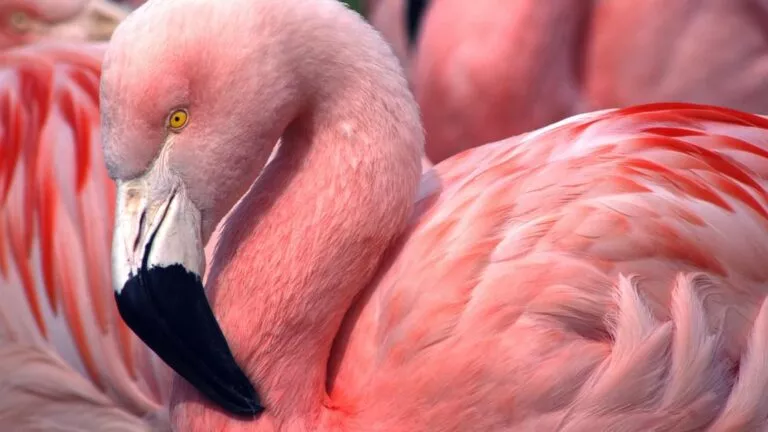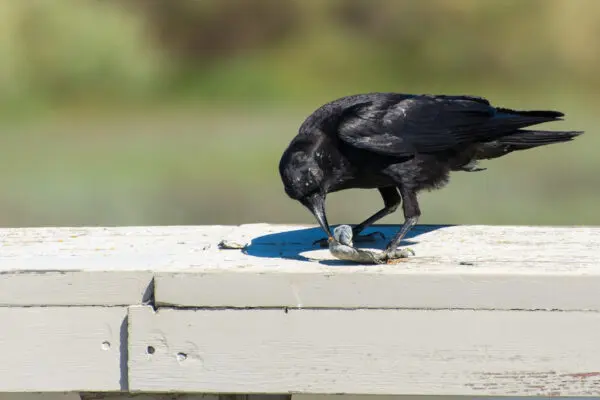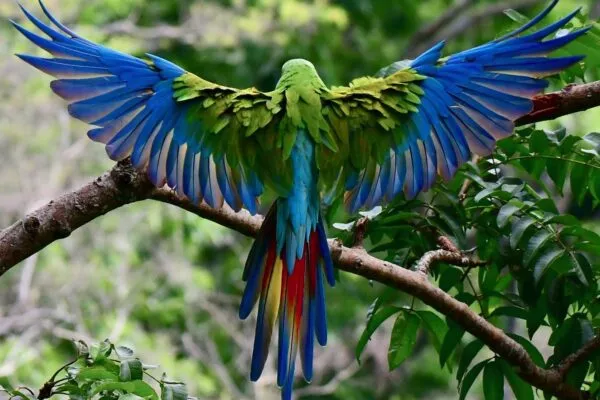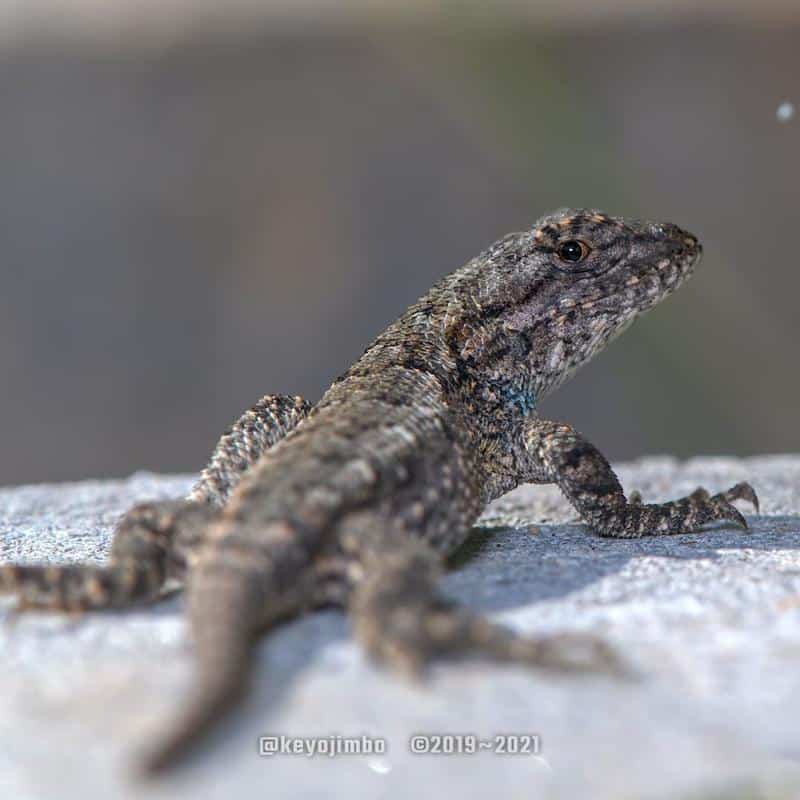The most distinguishing characteristic of flamingos, apart from their extended neck and long, thin legs, is perhaps their pink plumage. The name of the species itself is said to have originated from the Spanish word “flame,” “flamengo,” which refers to its flamboyantly bright plumage.
However, instead of the vibrant pink we associate with these elegant tropical waders, a young flamingo really emerges from its egg as a light gray fluffy bundle. Continue reading to find out more about how flamingos get their characteristic color.
Flamingos’ extraordinary pink color is often attributed to their nutrition rather than their genetic makeup. Is it really the case that flamingos, who are known to consume a lot of crustaceans, get their distinctive pinkish-orange hue from the shrimps they eat?
Not quite, however. The carotenoid pigments in the algae that shrimp eat give them their pink hue, which is also shared by the flamingos that consume them. Without this color, prawns that were fed algae by flamingos would stay completely white.
A Diminished Flamingo Flamingos’ vibrant pink color is often attributed to their nutrition rather than their genetic makeup.
The Anatomy and Pigmentation of Flamingos: The Biology of Color
There are bird species with plumages that cover the whole color spectrum, such as the Scarlet Ibis, yellow canaries, and vivid green parakeets. These species range from pristine white Swans and Egrets to jet-black Crows and Ravens.
Many birds have cryptic patterns that help them blend in quietly with their wooded environments or stay concealed by hedgerows and shrubs. Flamingos have striking pink plumage that is anything from subdued. Continue reading to find out more about their distinct colors and how and why they have developed.
Flamingos often consume blue-green algae when they saunter across shallow water in search of food. This carotenoids-rich algae is also often consumed by shrimp and other crustaceans, which are the primary food source for flamingos in the wild.
Carotenoids are pigments that have yellow, orange, and red coloring. Examples of these pigments include autumn leaves, carrots, grapefruits, maize, and pumpkins. They also include beta carotene and lutein. Carotenoids are found in many bacteria, plants, fungi, and mammals.
The algae known as spirulina, which is often found in the alkaline waters of lakes and ponds, has a very high beta-carotene content. It plays a major part in flamingos’ nutrition, both directly and via shrimps, which gives them their distinctive hue.
A Greater Flamingo: Flamingos’ striking pink plumage is anything from subdued.
Nutritional Impact: Your Food Shapes Who You Are
The adage “You are what you eat” is well known. This is especially true for flamingos, since a large portion of their natural diet consists of pink-orange shrimp. In actuality, however, it’s not quite that easy since shrimp also need certain nutrients in their diet to become pink.
Continue reading to discover the natural compounds that combine to alter the color of shrimp and, therefore, flamingos.
With its wide, curved beak, a flamingo uses the lagoons it wades through to filter out algae, brine shrimp, and other invertebrates for its main meal. Though few in number, the salinity and alkalinity of the waters that make up Famingos’ natural habitats are suitable for the growth of algae and the crustaceans that feed on them.
Carotenoids, the pigment chemicals that give Flamingos’ plumage its pink-orange hue, are abundant in the tiny blue-green algae that are found in these waters and that they consume together with the crustaceans that make up most of their diet.
The chemicals are then broken down by enzymes in the Flamingos’ liver into pigment molecules that are pink and orange. These pigment molecules are then transferred to the Flamingos’ feathers, legs, and beaks, giving them their characteristic rosy pink look.
The quality and availability of food in a flamingo’s immediate habitat have a significant impact on the color of its plumage. The birds who live and eat in ponds and pools with low levels of algae or crustaceans are not as pink as those where algae and brine shrimp are abundant because these settings do not have a high enough density of carotenoids to generate rich pink colors.
A Lesser Flamingo: The quantity and quality of food in a flamingo’s immediate habitat has a big impact on the color of its plumage.
Life Stages: Pink to Gray
In their early stages of life, flamingo chicks are a faint yellowish gray rather than pink at birth. Discover how and when juvenile flamingos get their distinctive pink feathers by reading on.
When a flamingo chick hatches, it looks quite different from the long-legged shape that is recognized as a symbol of elegance and poise worldwide. Flamingo chicks have enlarged red legs, and a straight red beak, and are coated in gray-white down when they are born. Early on after hatching, they are not very mobile, and they need a lot of work to be able to execute the well-known one-legged position.
A flamingo chick’s legs and beak will become black in seven to ten days, but they will still need to grow before they resemble a “proper” flamingo. In the first weeks of their lives, juvenile Flamingos depend on their parents to provide them with crop milk—a laborious procedure that depletes the energy and resources of the adult Flamingos, making them seem less vividly pink.
As they learn to fly and hunt, juvenile flamingos lose their first down and molt into gray plumage. Their plumage changes as chicks mature and become more self-sufficient, searching for food on their own. The pinkish hue they acquire represents their maturity and self-sufficiency. When flamingos attain their fully grown “pinkness,” they will no longer be able to be distinguished from adults by the time they are one or two years old.
An American Flamingo and its chick – Flamingo chicks have enlarged red legs, a straight red beak, and are initially coated in gray-white down.
A young American Flamingo – As they learn to fly and hunt, juvenile Flamingos lose their first down and molt into gray plumage.
Ecological Aspects: Health and Habitat
A flamingo’s plumage color may provide important details about its general health and environmental quality. Continue reading to find out more about how a flamingo’s pinkness may reflect its fitness, nutrition, and habitat suitability for meeting its demands for food and health.
The general health and nutrition of a flamingo have a significant impact on the intensity of its pink coloration. Flamingos with duller, paler feathers and less vivid plumage are indicative of low nutrition and health problems. On the other hand, Flamingos that are in good health and fitness and eat a diet high in foods that contain high levels of carotenoids will have pinker hues.
Dramatic color changes, ranging from the deepest, brightest tones of fuchsia to displaying males trying to entice a partner with their looks, are often seen during the mating season.
When rearing young, these hues may quickly disappear as the energy and resources of both parents are used up on activities like laying eggs, incubating them, and feeding and tending to them. When they are first parenting, new parents’ plumage is often more whitish-gray than pink until their offspring become independent and don’t need as much care.
Fascinatingly, studies conducted on Flamingo colonies in their natural habitat indicate that the dominant males within a colony tend to be the ones with the deepest, richest pink feathers. The pinkest flamingos may also be the most aggressive and competitive when it comes to food sources, according to research.
A larger flamingo’s nest When raising children, these hues may quickly fade as parents’ energy and resources diminish.
Flamingo Subspecies: Differences in Tone
The Greater Flamingo, Chilean Flamingo, Lesser Flamingo, Caribbean Flamingo (sometimes called the American Flamingo), Andean Flamingo, and Puna Flamingo are the six subspecies of Flamingo. Continue reading to find out whether every Flamingo is the same shade of pink or if some are pinker than others!
Depending on the species, flamingos’ natural plumage may be anything from light pastel pink to a deep scarlet. Originally called the rosy Flamingo to set it out from the much lighter Greater Flamingo, the American, or Caribbean, Flamingo has the brightest plumage. American Flamingos may have vivid crimson feathers on their necks and tails, and their outer wing coverts are reddish. The Lesser Flamingo and the Andean Flamingo, on the other hand, have much lighter plumage, with the Andean Flamingo’s having a black wing patch.
The presence or absence of blue-green algae in a flamingo’s feeding grounds affects the feather color grade. It’s interesting to note that the species of Flamingo that have the richest coloration are the ones that consume bigger quantities of algae directly, as opposed to obtaining lower amounts of carotenoids indirectly via the consumption of shrimp and other crustaceans that have already eaten them.
Originally called the pink Flamingo, the American, or Caribbean, Flamingo has the brightest plumage.
An Andean Flamingo: The presence of blue-green algae in a flamingo’s feeding grounds affects the color of the feathers.
Beyond Biology: The Cultural Significance of Pink Flamingos
Pink flamingos are a visually arresting symbol that are widely used as a symbol of summer, fun, and leisure. You may see them often as designs on pool inflatables, garden décor, and swimwear. Images of Flamingo flocks in their native settings provide a breathtaking depiction of one of nature’s greatest beauties. Continue reading to discover more about the timeless allure of these gorgeous pink shorebirds.
The attraction of flamingos in popular culture and the art world is quite broad. Beauty and peace are symbolized by the elegant posture of a flamingo, which balances gracefully on one leg. In several cultures—many of which are found in Africa—flamingos are a symbol of community, flexibility, and tranquility. Their inherent pink hue makes them suitable as a representation of both unsurpassed simplicity and fecundity as well as motherhood.
In various situations, flamingos have taken on the qualities of a 1950s kitsch emblem or a vintage pop art adornment, serving as symbols of popular culture, fashion, and design. In the 1950s and 60s, plastic flamingo lawn decorations were wildly popular, bringing color and personality to hundreds of thousands of backyards all across the country.
A flamingo’s vibrant appearance and tropical associations make it the perfect symbol for getaways, leisure, and good times. Their exotic look combined with their connection to seaside areas evokes memories of carefree summertime.
An American Flamingo: A flamingo’s exquisite balance on one leg, which represents beauty and peace,
Environmental Issues: Preserving the Pink
The condition of a flamingo’s environment may be directly determined by looking at its plumage, and dwindling pinks are a certain signal of wetlands’ decrease and foraging waterways’ pollution. Learn more about how habitat loss affects flamingos’ typical hue by continuing to read.
The long-term survival of flamingos, which need a specific habitat for eating and reproducing, is seriously threatened by habitat loss. The presence of saline water determines their main nutritional requirements. These lakes and lagoons can no longer sustain aquatic life, including crustaceans and the vast algae that flamingos rely on, when wetlands are gone, waterways become contaminated, and the pH balance of the water is altered.
An algal bloom, which is characterized by high nitrogen levels and low oxygen levels necessary to sustain the aquatic ecology, is a sign that the water quality in a pool or lake is deteriorating. Flamingos cannot consume enough high-quality food to maintain excellent health in contaminated waters, and this will start to appear in the color of their feathers.
Final Thoughts
Because of their striking pink plumage, elegant gait, and distinctive coloration and profile that set them apart from all other birds in the natural world, flamingos are considered iconic animals.
In addition to improving their health, maintaining flamingos’ natural habitats is essential to their continued iconic presence in the natural world. This includes giving them access to their favorite foods and wetland foraging grounds. Pink Flamingos as we know them would disappear if landscapes were altered and ponds rich in algae were lost.
Three James’s Flamingos: Flamingos need a specific habitat for mating and eating, hence their long-term existence is seriously threatened by habitat degradation.
FAQs
Can flamingos really become white?
A Flamingo that is given a diet deficient in carotenoids will become paler until its diet contains foods that have this pigment again. The demanding procedure of making crop milk and giving it to chicks may practically exhaust flamingo parents while they are nursing young. It’s common for parents to lose their vibrant pink color until their chicks are completely independent. They may even become completely white.
What is the duration required for a flamingo to become pink?
The young Flamingos are brownish as they hatch and bear little resemblance to the immediately recognizable pink waders with hookbills and ballerina-like features. The process of turning fully pink takes time. Young chicks hatch as a mottled shade of gray and white, gradually changing into a uniform gray as adolescent birds, and only become their distinctive hot pink color when they are between one and two years old.
Do any other animals exhibit dietary-related hue changes?
Many bird and animal species, such as salmon, American goldfinches, cedar waxwings, and even frilled dragons, are affected by their diet. Once again, the pigments at question are carotenoids, which may be found in various forms in the diets of these animals.
The brilliant yellow feathers of American Goldfinches are derived from seeds that are high in carotenoids, but Cedar Waxwings’ tail feathers may be orange, red, or yellow depending on how many red berries they consume.
Does it really happen that flamingos in zoos lose their pink hue?
The quantity of carotenoids that Flamingos in zoos need to maintain their distinctive pink color may be disrupted if they are not given their natural diet. In the wild, flamingos mostly consume pink brine shrimp, which in turn eat blue-green algae, which has a high concentration of carotenoids necessary to preserve the vibrant pink color of their feathers.




![21 Weirdest Birds in the World [Images + IDs]](https://birdsology.com/wp-content/uploads/2023/11/schildschnabel-zoom-tim-laman-600x400.jpg.webp)

One thought on “Why Are Flamingos Pink? All You Need to now”